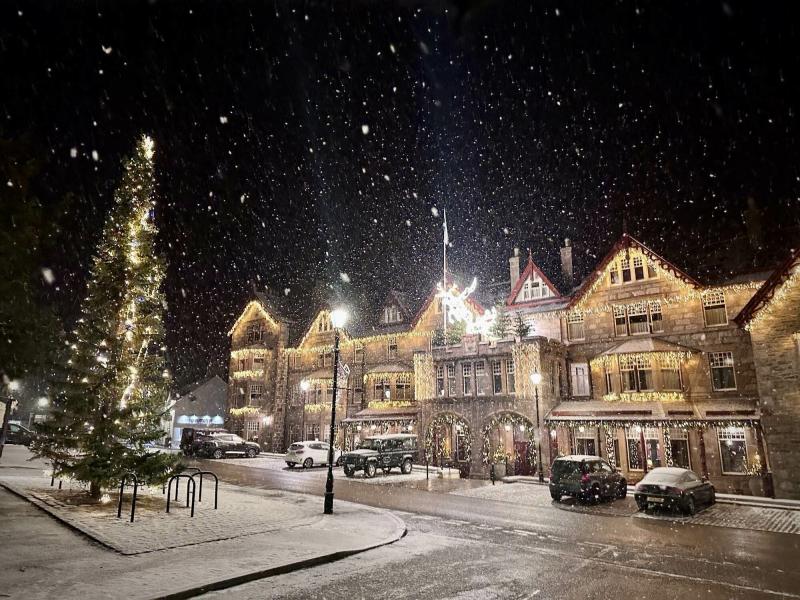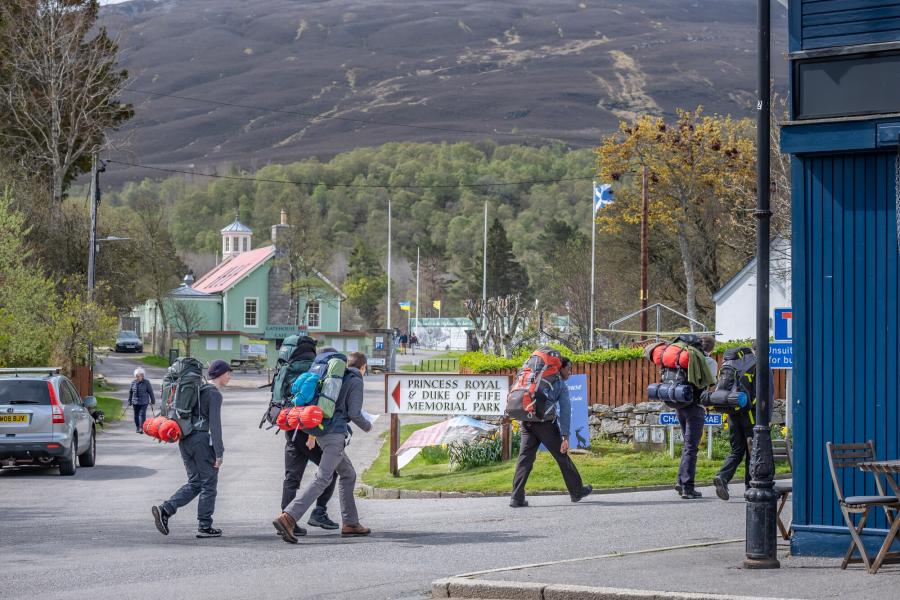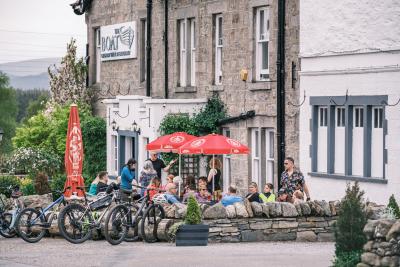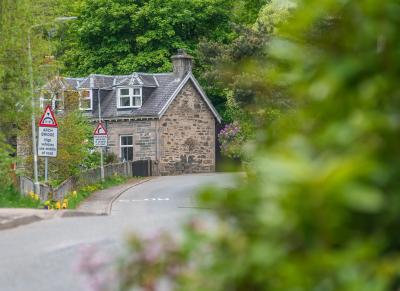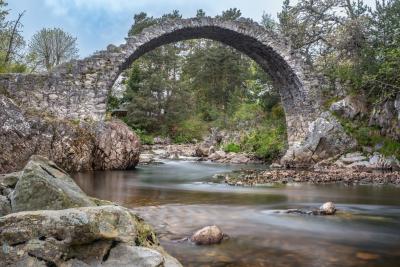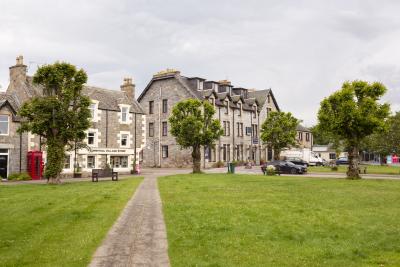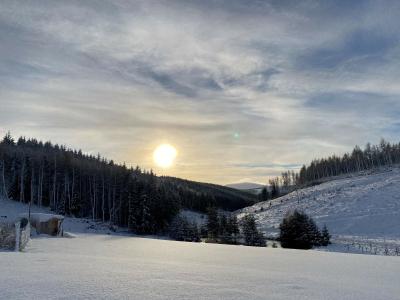Braemar
Bràigh Mhàrr
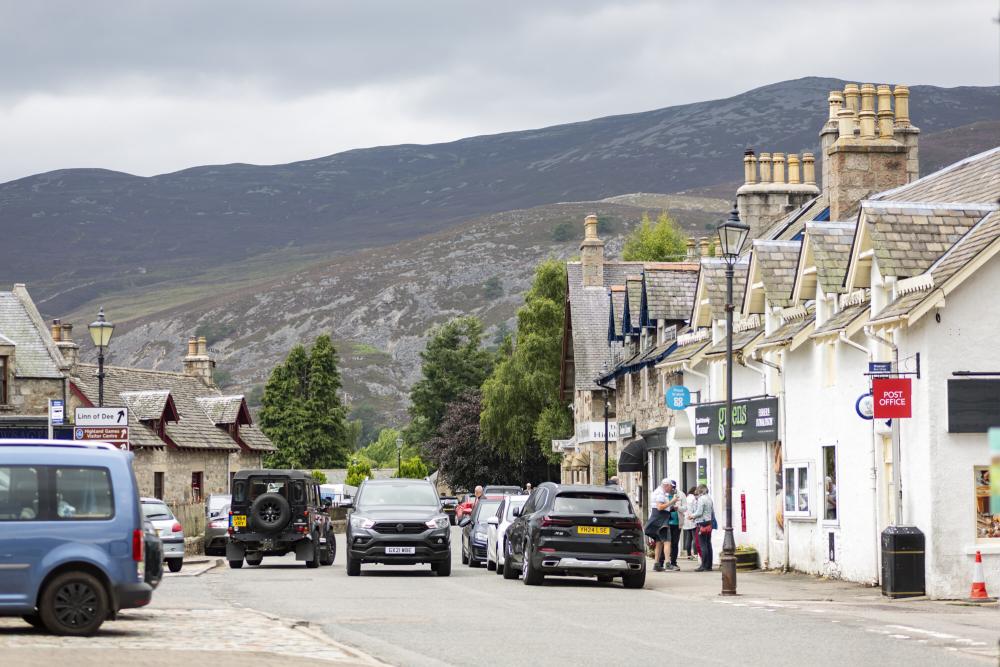
Braemar is located in the centre of the Cairngorms National Park. Its Gaelic name, Bràigh Mhàrr, which translates to a literal description of its location - Upland of Marr - was originally used to label the entire area until approximately 1870, when it became unique to the village.
From Kings to clan folk, the village’s proximity to hill passes has made this a strategic settlement for centuries. Braemar Castle, a five-story turreted house dating back to 1628, stands boldly on the outskirts of the town. Many of the castle’s features, including the star-shaped curtain wall and ‘laird’s pit’ (i.e. dungeon) make it one of the National Park’s most iconic landmarks.
In the village itself are various independent shops, cafés and restaurants. A range of walks can be accessed from the town centre via community paths - all framed with stunning mountain views.
Given its proximity to Balmoral Castle (a 15-minute drive), royal connections weave through the town. Queen’s Drive, said to be Queen Victoria’s preferred carriage route, for example, is now a walking path that runs parallel to Clunie Water, the river on which the town sits.
The Monarch is also patron of one of the village’s most celebrated events: The Braemar Gathering. Dating back to 1832, this annual event attracts visitors from across the world for a festival of traditional Highland activities - from hill running to Highland dancing.
Nature here is hardy. Braemar is the UK’s third-coldest low-lying place, with an average mean temperature of just 6.8°C. It’s no surprise, therefore, that Scotland’s largest ski area is just a 15-minute drive away. At Glenshee, snowsports fans can spread across three valleys and four mountains.
Aberdeen, Dundee and Perth are all within a one-and-a-half hour’s drive from the village, where a greater range of amenities - including shops and travel connections - can be accessed.
Braemar is located in the centre of the Cairngorms National Park. Its Gaelic name, Bràigh Mhàrr, which translates to a literal description of its location - Upland of Marr - was originally used to label the entire area until approximately 1870, when it became unique to the village.
From Kings to clan folk, the village’s proximity to hill passes has made this a strategic settlement for centuries. Braemar Castle, a five-story turreted house dating back to 1628, stands boldly on the outskirts of the town. Many of the castle’s features, including the star-shaped curtain wall and ‘laird’s pit’ (i.e. dungeon) make it one of the National Park’s most iconic landmarks.
In the village itself are various independent shops, cafés and restaurants. A range of walks can be accessed from the town centre via community paths - all framed with stunning mountain views.
Given its proximity to Balmoral Castle (a 15-minute drive), royal connections weave through the town. Queen’s Drive, said to be Queen Victoria’s preferred carriage route, for example, is now a walking path that runs parallel to Clunie Water, the river on which the town sits.
The Monarch is also patron of one of the village’s most celebrated events: The Braemar Gathering. Dating back to 1832, this annual event attracts visitors from across the world for a festival of traditional Highland activities - from hill running to Highland dancing.
Nature here is hardy. Braemar is the UK’s third-coldest low-lying place, with an average mean temperature of just 6.8°C. It’s no surprise, therefore, that Scotland’s largest ski area is just a 15-minute drive away. At Glenshee, snowsports fans can spread across three valleys and four mountains.
Aberdeen, Dundee and Perth are all within a one-and-a-half hour’s drive from the village, where a greater range of amenities - including shops and travel connections - can be accessed.
Braemar
key
facts







